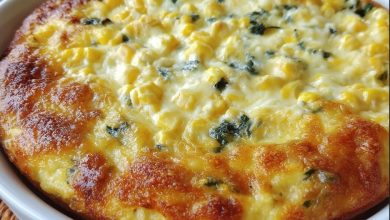This is news to me!

Velveting might sound mysterious, but it’s a straightforward and effective method for tenderizing meat. If you’ve ever wondered why the chicken or beef in your favorite Chinese dish is so tender, velveting is likely the reason. This technique involves marinating meat in a mixture that typically includes cornstarch, egg whites, and sometimes additional ingredients. This creates a protective coating that locks in moisture and enhances texture during cooking.
ADVERTISEMENT
The Origins of Velveting
Velveting is a traditional Chinese cooking technique that has been used for centuries. It originated to ensure that meat remained tender and juicy, even when cooked at high temperatures in a wok. Developed to complement the fast cooking times of stir-frying, velveting prevents the meat from becoming tough or dry. Over time, this technique has become a staple in Chinese cuisine and is now used in various dishes around the world.
ADVERTISEMENT
Understanding the Velveting Technique
The velveting technique involves coating meat in a mixture of cornstarch, egg whites, and sometimes rice wine or soy sauce. This mixture forms a thin layer around the meat, sealing in moisture and creating a silky texture. The meat is then briefly blanched in hot oil or water before being stir-fried or cooked using another method. This pre-cooking step ensures that the meat remains tender and juicy, even when exposed to high heat.
ADVERTISEMENT
Why Velveting Enhances Meat Texture
Velveting enhances meat texture by creating a barrier that prevents moisture loss during cooking. The cornstarch in the marinade forms a gel-like coating that protects the meat fibers from the intense heat of stir-frying. This results in tender meat with a smooth, velvety texture. Additionally, the egg whites in the marinade contribute to the silkiness of the meat, making it more palatable and enjoyable.
Common Ingredients Used in Velveting
The most common ingredients used in velveting are cornstarch, egg whites, and rice wine or sherry. Some recipes also call for soy sauce, sesame oil, or baking soda, depending on the desired flavor and texture. Each ingredient plays a specific role in the velveting process: cornstarch creates the protective coating, egg whites add smoothness, and rice wine or soy sauce enhances flavor.
Step-by-Step Guide to Velveting Meat
- Slice the Meat: Start by slicing the meat into thin, uniform pieces.
- Prepare the Marinade: In a bowl, combine cornstarch, egg whites, and any additional ingredients like rice wine or soy sauce. Mix until smooth.
- Marinate the Meat: Add the meat to the mixture, ensuring each piece is well-coated. Let it marinate for at least 30 minutes.
- Blanch the Meat: Bring a pot of water or oil to a simmer and blanch the meat for 30-60 seconds until it turns opaque. Remove and drain the meat.
- Cook the Meat: Proceed with your recipe, such as stir-frying with vegetables and sauce.
Popular Dishes That Use Velveting
Velveting is commonly used in dishes like Kung Pao Chicken, Mongolian Beef, and Lemon Chicken. These dishes are known for their tender, juicy meat that pairs perfectly with flavorful sauces and crisp vegetables. Velveting is also used in many other Chinese stir-fry dishes, as well as in some Western adaptations of Asian cuisine.
Comparing Velveting to Other Tenderizing Methods
Velveting differs from other tenderizing methods like marinating with acidic ingredients or using a meat mallet. While acids can break down proteins and tenderize meat, they can also alter its flavor and texture. Mechanical tenderizing can make meat more tender but might not achieve the same silky texture as velveting. Velveting is unique in its ability to maintain the meat’s natural flavor while enhancing its texture.
Tips and Tricks for Perfect Velveting
For perfect velveting, ensure that the meat is sliced evenly to allow for uniform cooking. Do not over-marinate, as this can lead to a mushy texture. When blanching, avoid overcrowding the pot to ensure even cooking. Finally, practice makes perfect—experiment with different ingredient ratios to find the texture and flavor you prefer.
Conclusion: Embracing the Art of Velveting
Velveting is a simple yet transformative technique that can elevate your home-cooked meals to restaurant-quality dishes. By understanding and mastering this method, you can enjoy tender, juicy meat with a delightful texture. Whether you’re cooking a traditional Chinese dish or experimenting with new flavors, velveting is a valuable skill that can enhance your culinary repertoire.




